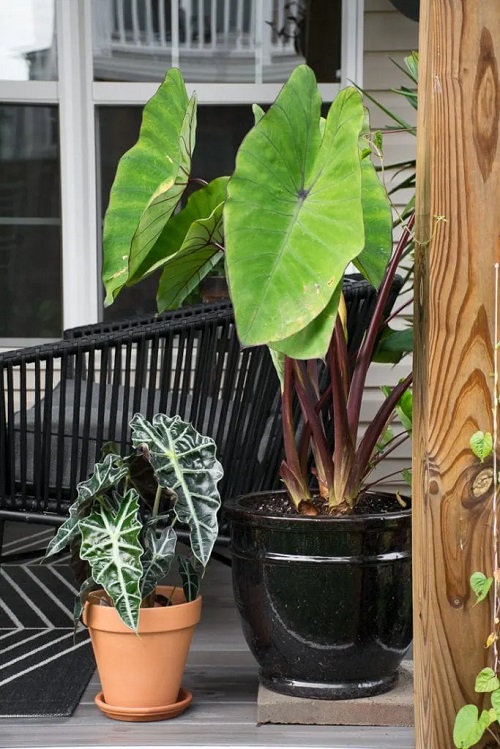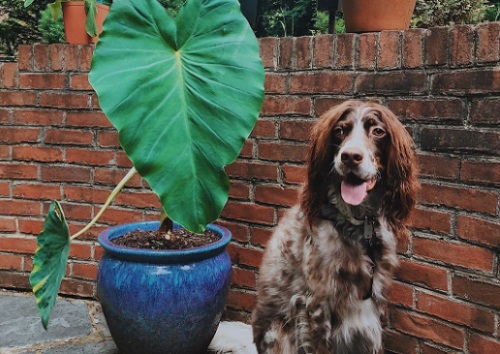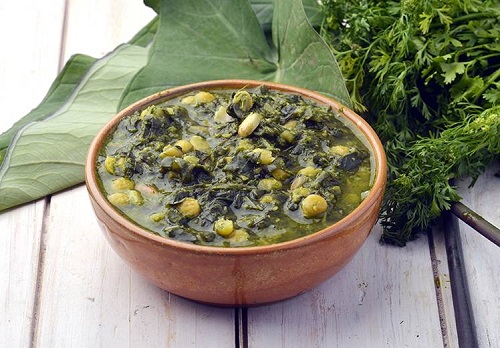Is Elephant Ear Sap Poisonous? Can it cause serious issues? Keep on reading to find all the answers with information!

Elephant Ear plants are popular for their striking, large heart-like leaves that make them a popular choice for indoor and outdoor gardening. However, many people are unaware of its toxicity. So, Is Elephant Ear Sap Poisonous? Let’s find out!
Look at the Plants that Look like Elephant Ears But are Not here
Elephant Ear Plant Information
The Elephant Ear plant is an herbaceous perennial plant native to tropical and subtropical regions of Asia and Africa. It is grown as an ornamental plant for its large, heart-shaped leaves. The plant is also known as a taro plant or dasheen. It is related to the common potato, but it is grown as a food crop in many parts of the world.
The Elephant Ear plant grows best in full sun to partial shade and requires moist but well-drained soil. It prefers a soil pH between 6.0 and 7.0. The foliage is deep green or purple in color and can be variegated. It also produces small, white flowers in the summer, followed by small, black fruits in the fall.
Plants like Xanthosoma, Caladium, Colocasia, and Alocasia come under the name.
What Does Elephant Ear Plant Look Like?
The Elephant Ear Plant is an ornamental plant with large, heart-shaped leaves that are typically green but can also be variegated with white or yellow.
The leaves can grow up to three feet long and two feet wide, giving them the appearance of elephant ears. The plant also has thick, upright stems and produces small, white flowers.
Have a look at the best types of Elephant Ear Plants here
Is Elephant Ear Sap Poisonous?

The Elephant Ear Sap contains calcium oxalate crystals, which can cause irritation and inflammation when they come into contact with the skin, eyes, or mucous membranes. Ingestion of the plant can cause severe burning and swelling of the mouth, throat, and digestive tract.
The level of elephant ear sap toxicity can vary depending on factors such as the amount of sap ingested or exposed to, the age and health of the person or animal exposed, and the specific species of elephant ear plant.
Learn about the Growing Elephant Ear Plant Indoors here
Are flowers, Berries, And Seeds of Elephant Ear Toxic?
Yes, all parts of the Elephant Ear plant are considered toxic, so it is best to avoid them. Eating these parts can cause excessive drooling and mouth irritation.
Is Elephant Ear Sap Poisonous? Find Out here
Is Elephant Ear Poisonous to Children?
Cooked leaves are not poisonous, but curious children should avoid coming into contact with Elephant Ears as they contain toxins that can cause skin irritation, rashes, and itching upon touching the stems or leaves.
Is Elephant Ear Poisonous to Dogs?

Dogs should avoid consuming any part of the Elephant Ears plant as it contains toxic substances that can cause illness. After ingesting leaves or stems, animals may experience symptoms such as excessive drooling, mouth irritation, and swelling, which can lead to difficulty swallowing.
Other indications of poisoning in dogs include vomiting, diarrhea, slowed heart rate, and lack of coordination.
Find out Poisonous Plants for Dogs here
Is Elephant Ear Poisonous to Cats?
Cats are susceptible to the toxic effects of insoluble calcium oxalates present in Elephant Ears. Ingesting any part of the plant’s stems or leaves can trigger a harmful reaction in cats, leading to symptoms such as drooling, swelling, and irritation of the lips, tongue, and mouth.
Are Poinsettias Poisonous to Cats and Dogs? Click here to Know
Symptoms of Elephant Ears Poisoning
If you suspect Elephant Ear poisoning, it is crucial to seek guidance from your doctor or veterinarian. Below are some common symptoms to watch out for:
- Skin irritation and the appearance of a rash
- Swelling of the mouth and throat if the plant is ingested
- Nausea
- Vomiting
- Diarrhea
What To Do If You Come In Contact With Elephant Ear Sap?
If you come in contact with elephant ear sap, it is important to wash the affected area with soap and water immediately. For any discomfort, such as itching or burning, apply topical hydrocortisone cream to the area.
If you have any allergies or sensitivity to sap, seek medical attention.
Are Spider Plants Poisonous to Cats? Find out here
How to Prevent Elephant Ear Sap Poisoning?

The first approach is to position the plants out of reach in areas such as the front yard, where children and pets are less likely to play.
Educate your children to avoid touching or consuming any plant in the yard. Alternatively, consider growing it away from the reach of children and pets. It is crucial to remove any fallen leaves promptly to prevent access by children or pets.
Check out Elephant Ear Plant Types here
Are Tubers of Elephant Ear Edible?
Not every elephant ear plant’s tubers are eatable. The tubers of only Colocasia esculenta and Xanthosoma sagittifolium are the ones you can eat.
Elephant Ear plant tubers are starchy tropical root vegetables that can be cooked and eaten as a side dish or used to make bread, cakes, and other baked goods. They have a slightly sweet, nutty flavor and can be found in many Caribbean, Asian, and African dishes.
The tubers contain a significant amount of calcium oxalate, and eating way too much of it can cause health problems, such as kidney stones and digestive issues.
To reduce the amount of calcium oxalate in the tubers, it is recommended to steam, boil, or pressure-cook the vegetable before consuming it. Additionally, it is best to avoid eating raw tubers as this can increase the oxalate content.


